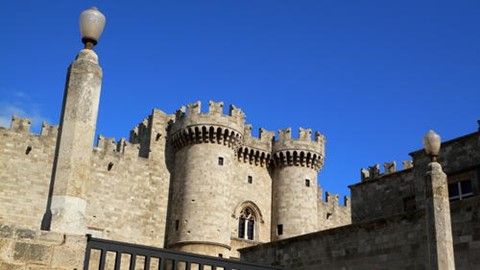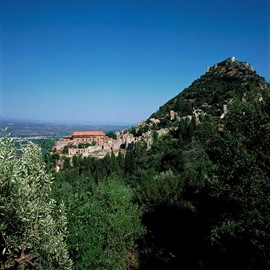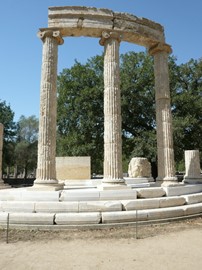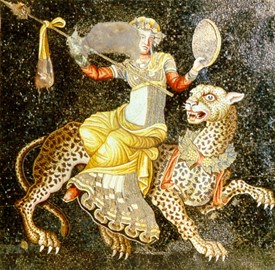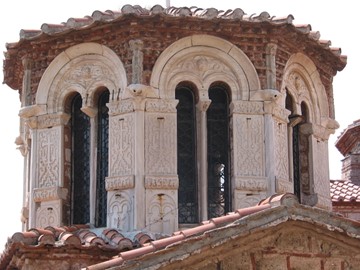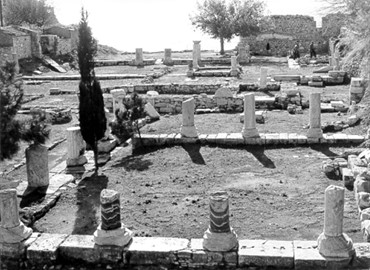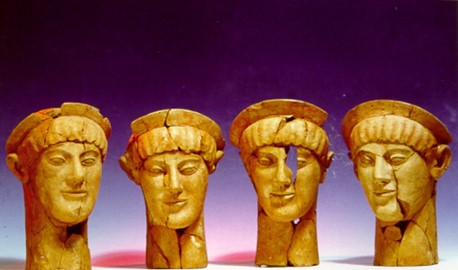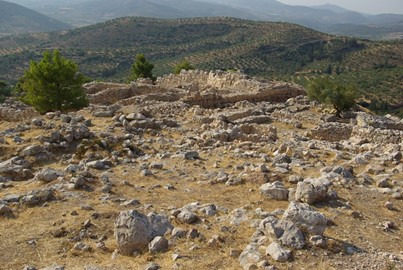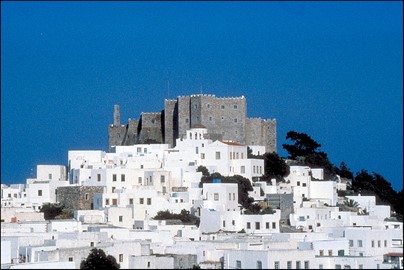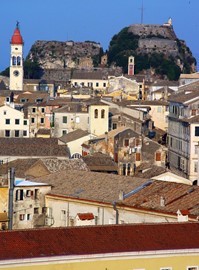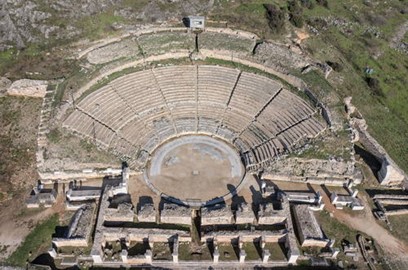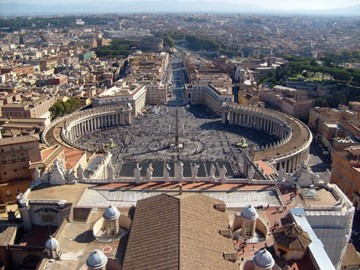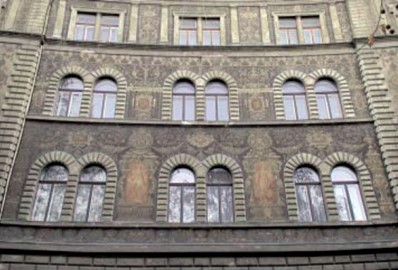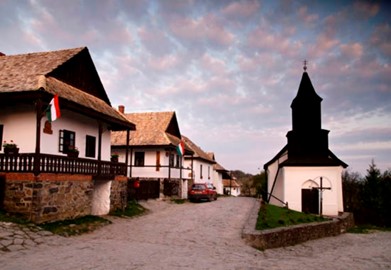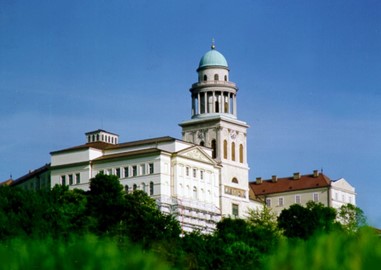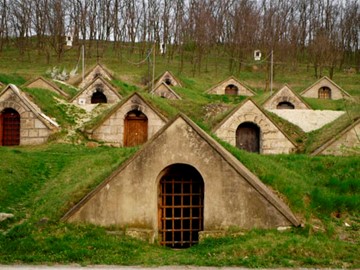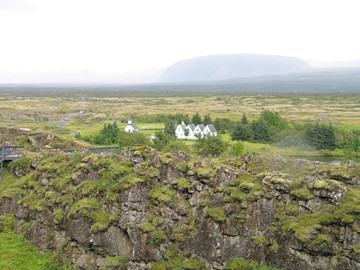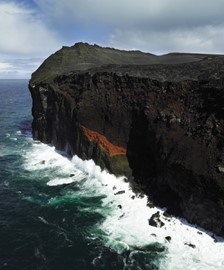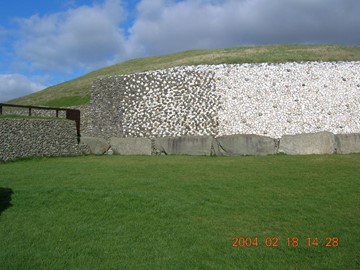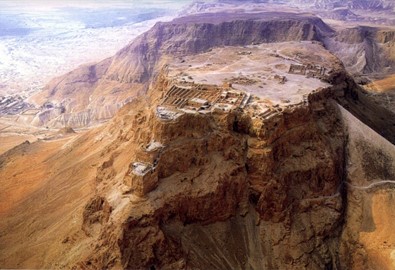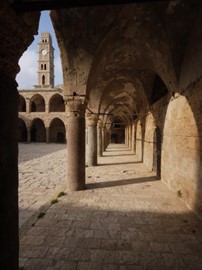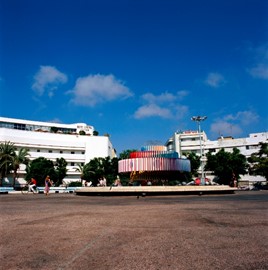region :: europe and north america
Rhodes
The Medieval City of Rhodes, a UNESCO World Heritage site, is a well-preserved historical gem in Greece, renowned for its impressive fortifications, cobblestone streets, and Gothic architecture. Built by the Knights of St. John in the 14th century, it reflects a blend of medieval European and local influences. The city’s massive walls, grand palaces, and ancient gates offer a glimpse into its storied past as a strategic stronghold. Today, it stands as a living museum, attracting visitors with its timeless c... Read More
Mystras
Mystras, a UNESCO World Heritage site in Greece, is a remarkably preserved medieval fortified town. Founded in the 13th century, it served as a Byzantine capital and cultural hub, boasting impressive architecture like palaces, churches, and monasteries adorned with intricate frescoes. Its historical significance lies in its role as a center of power and learning during the late Byzantine era. Today, it stands as a captivating testament to Greece’s rich past, drawing visitors to explore its winding streets a... Read More
Olympia
The Archaeological Site of Olympia, a UNESCO World Heritage site in Greece, is renowned as the birthplace of the Olympic Games, first held in 776 BCE. This ancient sanctuary features well-preserved ruins, including the Temple of Zeus, once home to a colossal gold-and-ivory statue of the god, and the stadium where athletes competed. The site also includes the workshop of sculptor Phidias and various structures tied to religious and athletic activities. Excavations have revealed artifacts showcasing its histo... Read More
Delos
Delos, a UNESCO World Heritage site in Greece, is a small, uninhabited island renowned for its rich archaeological significance. Once a thriving religious and commercial center in antiquity, it is celebrated as the mythological birthplace of Apollo and Artemis. The site features well-preserved ruins, including temples, mosaics, and the famous Terrace of the Lions, offering a glimpse into ancient Greek civilization. Today, it stands as a testament to its historical and cultural importance, attracting visitor... Read More
Daphni, Hosios Loukas and Nea Moni of Chios
Daphni, Hosios Loukas, and Nea Moni of Chios are three UNESCO World Heritage sites in Greece, renowned for their exceptional Byzantine architecture and art. These monasteries, dating from the 11th and 12th centuries, feature stunning mosaics and frescoes that exemplify the artistic and religious mastery of the era. Each site reflects the cultural and historical significance of the Byzantine Empire, offering a glimpse into its architectural innovation and spiritual heritage. Together, they stand as well-pres... Read More
Pythagoreion and Heraion of Samos
The Pythagoreion and Heraion of Samos, a UNESCO World Heritage site in Greece, encompass an ancient fortified port and a significant sanctuary dedicated to the goddess Hera. The Pythagoreion features impressive archaeological remains, including a sophisticated aqueduct tunnel and Roman baths, reflecting advanced engineering from the 6th century BC. Nearby, the Heraion, one of the largest temples of its time, showcases early Greek architecture and religious practices, with its single standing column as a str... Read More
Aigai
The Archaeological Site of Aigai, a UNESCO World Heritage site in Greece, is renowned as the ancient capital of the Macedonian kingdom, flourishing from the 11th century BCE. It features significant historical landmarks, including the royal tombs of Philip II, father of Alexander the Great, and an impressive theater where key events unfolded. Excavations reveal a well-preserved urban layout, palaces, and intricate burial sites, showcasing the architectural and cultural prowess of the era. This site offers i... Read More
Mycenae and Tiryns
The Archaeological Sites of Mycenae and Tiryns, recognized as a UNESCO World Heritage site, showcase the impressive remnants of two major centers of the Mycenaean civilization, flourishing from the 15th to 12th century BCE. These sites feature monumental cyclopean walls, elaborate palaces, and well-preserved tombs, reflecting the architectural and cultural achievements of this ancient Greek society. Excavations have uncovered artifacts like the famous Lion Gate and gold masks, offering insights into the wea... Read More
Pátmos Island
Pátmos Island, a UNESCO World Heritage site in Greece, is renowned for its historical and cultural significance. This small Aegean island is home to the Cave of the Apocalypse, where St. John the Evangelist is said to have received the visions recorded in the Book of Revelation, and the imposing Monastery of Saint John, a well-preserved example of Byzantine architecture. Its charming villages, pristine beaches, and serene atmosphere make it a unique destination steeped in spirituality and tradition.
Corfu
The Old Town of Corfu, a UNESCO World Heritage site in Greece, is a well-preserved example of a fortified Mediterranean port town. Its historic architecture reflects Venetian, French, and British influences, with narrow streets, elegant buildings, and two imposing fortresses. The site’s cultural significance and strategic location have made it a notable landmark, showcasing centuries of history in a compact, walkable area.
Philippi
Philippi, a UNESCO World Heritage site in Greece, is an ancient city renowned for its historical and cultural significance. Founded in 356 BC by Philip II of Macedon, it later became a key Roman center, notably as the site of the 42 BC Battle of Philippi. The site features well-preserved ruins, including a theater, basilicas, and the Octagon church, reflecting its rich Greek, Roman, and early Christian heritage. Today, Philippi stands as a testament to its pivotal role in shaping Mediterranean history.
Vatican City
Vatican City, a UNESCO World Heritage site in Rome, is an independent city-state enclaved within Italy, serving as the spiritual and administrative headquarters of the Roman Catholic Church. Home to iconic landmarks like St. Peter’s Basilica and the Sistine Chapel, it boasts a rich history and unparalleled artistic heritage, including Michelangelo’s masterpieces. Governed by the Holy See, it attracts millions of pilgrims and tourists annually, offering a unique blend of faith, culture, and tradition.
Budapest
Budapest, a UNESCO World Heritage site in Hungary, is renowned for its stunning architecture, rich history, and vibrant culture. The city seamlessly blends the historic charm of Buda, with its medieval castle and cobblestone streets, and the bustling energy of Pest, home to grand boulevards and the iconic Parliament building. Highlights include the thermal baths, a legacy of Roman and Ottoman influences, and the picturesque Danube River, spanned by elegant bridges like the Chain Bridge. Budapest offers a ca... Read More
Hollóko
Hollókő, a UNESCO World Heritage site in Hungary, is a well-preserved traditional village showcasing the country’s rural life and architecture. Known for its unique Palóc culture, the village features 17th- and 18th-century houses with whitewashed walls and wooden porches, reflecting historical building techniques. Its cobblestone streets and vibrant folk traditions, including annual festivals, draw visitors seeking an authentic glimpse into Hungary’s past. The site’s designation highlights its global cultu... Read More
Hortobágy
Hortobágy, a UNESCO World Heritage site in Hungary, is a vast steppe landscape renowned for its unique cultural and natural heritage. This expansive plain showcases traditional pastoral practices, including the iconic Hungarian cattle herding by csikós (mounted herdsmen), alongside a rich biodiversity of rare bird species and grasslands. Recognized for its historical significance and ecological value, Hortobágy offers a glimpse into centuries-old traditions harmonized with nature, making it a remarkable tes... Read More
Pannonhalma Benedictine Abbey
Pannonhalma Benedictine Abbey, a UNESCO World Heritage site in Hungary, is a historic monastery founded in 996 AD. It stands as one of the oldest continuously operating monastic communities in the world, renowned for its architectural beauty, including a blend of Romanesque, Gothic, and Baroque styles. The abbey houses a vast library with rare manuscripts and serves as a cultural and spiritual center, reflecting its enduring significance in European history.
Pécs Necropolis
The Pécs Necropolis is an early Christian burial site recognized for its remarkable 4th-century tombs, adorned with intricate frescoes depicting biblical scenes and symbols of faith. This UNESCO World Heritage Site showcases the artistic and architectural sophistication of a community embracing Christianity during the Roman Empire. It offers a glimpse into the spiritual and cultural life of the era.
Tokaj Wine Region
The Tokaj Wine Region, a UNESCO World Heritage site in Hungary, is renowned for its historic vineyards and unique winemaking traditions dating back centuries. Located in the northeastern part of the country, this picturesque area is celebrated for producing Tokaji Aszú, a sweet, amber-hued wine made from grapes affected by noble rot, a process that concentrates their sugars and flavors. The region’s volcanic soil, microclimate, and ancient cellar systems contribute to its distinct terroir, earning it global... Read More
Thingvellir
Thingvellir, a UNESCO World Heritage site in Iceland, is a historic and geological marvel where the North American and Eurasian tectonic plates meet, creating a dramatic rift valley. It served as the location for Iceland’s ancient parliament, the Althing, established in 930 AD, making it one of the world’s oldest democratic assemblies. Visitors can explore its unique landscape, including fissures, waterfalls, and clear springs, while soaking in its cultural significance tied to Iceland’s heritage and identi... Read More
Surtsey
Surtsey, a UNESCO World Heritage site in Iceland, is a volcanic island formed by underwater eruptions between 1963 and 1967, offering a unique natural laboratory for studying ecological succession and geological processes. Named after the Norse fire giant Surtr, it remains uninhabited and strictly protected, allowing scientists to observe the gradual colonization of life, from microorganisms to plants and birds, in a pristine environment. Its significance lies in its untouched state, providing valuable insi... Read More
Brú na Bóinne
Brú na Bóinne, a UNESCO World Heritage site in Ireland, is a prehistoric landscape renowned for its ancient passage tombs, including the iconic Newgrange, Knowth, and Dowth. Dating back over 5,000 years, these monumental structures feature intricate megalithic art and align with solar events, reflecting the sophisticated astronomical knowledge of Neolithic people. This archaeological complex stands as a testament to early human engineering and cultural heritage.
Sceilg Mhichíl
Sceilg Mhichíl, a UNESCO World Heritage site in Ireland, is a striking monastic island featuring a well-preserved early Christian settlement. Perched atop a rugged rock, it includes stone beehive huts, oratories, and a medieval church, reflecting ascetic life from the 6th to 13th centuries. Its dramatic location and historical significance highlight its role as a unique cultural and spiritual landmark.
Masada
Masada, a UNESCO World Heritage site in Israel, is an ancient mountaintop fortress renowned for its historical and archaeological significance. Built by King Herod in the 1st century BCE, it features well-preserved palaces, bathhouses, and storehouses, showcasing Roman-era engineering. The site is celebrated as a symbol of Jewish resistance, linked to the dramatic stand of rebels against Roman forces in 73 CE. Its strategic location and stark desert backdrop highlight its enduring cultural importance.
Acre
The Old City of Acre, a UNESCO World Heritage site in Israel, is a historic port city renowned for its well-preserved Crusader-era fortifications and medieval urban layout. This coastal gem features an intricate network of underground tunnels, a grand Knights’ Hall, and remnants of Ottoman architecture, reflecting its layered history as a cultural crossroads. Its strategic location has shaped a unique blend of Eastern and Western influences, evident in its ancient walls and bustling markets.
White City of Tel Aviv
The White City of Tel-Aviv, a UNESCO World Heritage site in Israel, is renowned for its exceptional collection of modernist architecture from the 1930s and 1940s. Designed by European Bauhaus-trained architects, its white concrete buildings exemplify functional design and urban planning tailored to a Mediterranean climate. This distinctive urban landscape reflects a fusion of cultural influences and innovative 20th-century architectural principles.
